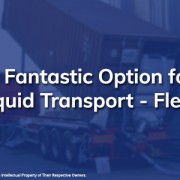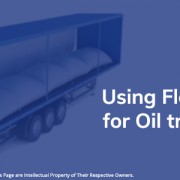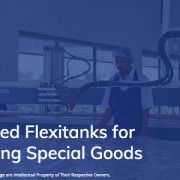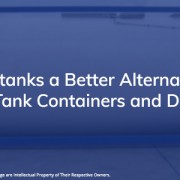A Fantastic Option for Bulk Liquid Transport – Flexitanks
Flexitanks are a revolutionary flexible tank bags that have transformed the way bulk non-hazardous liquids are transported coast to coast. These are considered more cost efficient, convenient and eco-friendly way of transporting liquid as compared to traditionally used drums and ISO tank containers.
Advantages of Using Flexitanks
- Flexitanks are easier to fill and unload; and can load up to 31% more cargo as compared to drums and IBC totes
- Reduces labor and loading expense considerably
- With single-use flexitanks, cleaning and repositioning costs also get reduced
- A safe mode of transporting liquid as there is no risk of cross-contamination
- Made of recyclable material therefore does not cause harm to the environment
- Can store up to 24,000 liters of liquid
- Are viable option for transporting food ingredients and non-hazardous chemicals and pharmaceutical reagents
Explore: Flexitanks for Bulk Liquid Transportation
Types of Flexitanks
Flexitanks are available in numerous varieties. You can choose the one that best suits your specific requirement.
1. Multi-Layered Flexitanks
Such flexitanks are made out of 4 to 5 layers of very thin and flexible polyethylene, which makes it convenient to completely roll the flexitanks after discharge. In such flexitanks, some product is bound to be left between the layers which cannot be extracted.
2. Single -Layered Flexitanks
Such flexitanks are prepared from a single layer of polyethylene which is thicker than the one used in multi-layer flexitanks and are, therefore, less flexible. The advantage of single layer flexitanks is that no product can get between the layers as there is none.
3. Bi-layer Flexitanks
Such flexitanks come with a hard but thin and flexible layer of polyethylene laminated with another twisted layer that safeguards the interiors of the container.
4. Trailer Flexitanks
These are ideal for converting curtain-sided trailer or reefer into a bulk liquid transport solution. Trailer flexitanks are especially helpful in situations when road tankers or shipping containers are not readily available.
5. Special Design Flexitanks
These are helpful in unique applications when you need to transform a shipping container into a customized bulk transport solution. You can ask for barrier layers to protect the cargo against oxygen, sunlight, heat, and odor transmission.
6. Static Storage Tanks
Such types of flexitanks are useful when you need to store water or any other non-hazardous liquid on a temporary basis. Static storage flexitanks are best suited for outdoor festivals, emergency fire fighting and even to transport water in drought-affected areas.
7. Heater Pads
Flexitanks with heater pads are an ideal option when transporting liquids such as palm oil, fatty acids, waxes, cocoa butter, shea butter, etc. that need heating at the discharge site. Heater pads for flexitanks by Rishi FIBC come with a patented re-heating mechanism. When fitted under the fluid flexitank these help in heating the cargo evenly before unloading. Explore: Heater Pads for Flexitanks
Contact Rishi FIBC
Rishi FIBC has a world-class fully-integrated manufacturing facility for producing flexitanks in Mysore, India. We produce all types of flexitanks and can customize these bulk liquid transport bags as per your requirement. Our flexitanks are created from FDA approved virgin polyethylene and polypropylene fabrics and hence are suitable for transporting a wide range of food grade and other non-hazardous liquid cargos.










